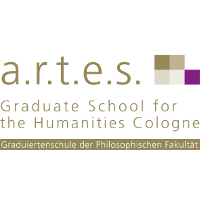Doctoral dissertation project of Anouk Everts
Moulding Love: A Study of Changing Perceptions of Sexuality and the Body in Hellenistic Egypt and the Mediterranean through Female Egyptianising Terracotta Figurines (working title)
Sexuality and gender have long been contended topics within archaeological research, and although we have gotten better at researching them, much of this research remains rooted in old theories and biases. While in the (European) recent past this binary is often seen as the norm, this does not have to have been the case in many other (past) cultures, of which more and more evidence has been found over the years. In recent years, much progress has been made by various authors to extend our understanding of sexuality and gender in the past, a context into which this research fits. However, this is often only applied to certain periods of time, and remains somewhat of a fringe topic within archaeological research.
This project aims to further incorporate research into sexuality in an archaeological context. It specifically explores sexuality and gender identity in Hellenistic Egypt and the Mediterranean, and looks into how these cultures influenced one another during the Hellenistic period. Here, two themes in current archaeological debate are combined: culture contact (or globalisation) and sexuality. Departing from a set of female terracotta figurines, I will draw on current debates of visual display, culture contact and agency to explain why a new iconographic repertoire emerged in the Hellenistic Mediterranean and specifically Egypt that opened the door to different forms of display.
The project combines the detailed analysis of the iconography and archaeological context of the figurines with theoretically informed approaches to the body and sexuality. My research focusses on a set of approximately 150 female figurines from (predominately) the archaeological sites Naukratis and Delos. Due to the international and cosmopolitan character of these two sites they provide an interesting context for questions of cultural interaction. Figurines from various other sites will also be analysed in order to make broader comparisons. The figurines can broadly be divided into three types, Isis-Aphrodite anasyr(o)mene, Oriental Aphrodite, and Baubo. All of these figurines display aspects which can be considered sexual in nature or at least interesting by way of looking at sexuality and its display. Isis-Aphrodite anasyr(o)mene displays Isis lifting up her skirts and exposing her vulva to the audience, Oriental Aphrodite is a naked Isis-type figurine and Baubo (also simply called ‘pregnant squatting female figurine’) is a generally naked figure of a woman with her legs spread in a squatting position.
Whereas the focus of gender research in Egyptology is on the Pharaonic period, this project develops existing models in the context of Hellenistic Egypt, analysing mechanisms of appropriation, negotiation and exchange in a multicultural world. While there has been an ongoing discussion in the academic community regarding the changes that took place in the Mediterranean in this period, this has not been done in the context of sexuality. Moreover, I will add to the discussion of how to deal with sexuality and the body in an archaeological context. By placing the figurines as a central part of my analysis, I aim to compare modern and ancient ideas of sexuality.
Short biography
Anouk Everts began her studies at Leiden University, where she graduated from her BA Archaeology (honours) in 2013, with a dissertation on gender and sexuality in the Umayyad period. After completing her BA, she was accepted into the Research Master programme for Near Eastern and Mediterranean Archaeology at Leiden University, from which she graduated in 2016. During her Research Master, she received an Erasmus grant to spend one semester at University College London. Here, she studied Egyptian archaeology and volunteered for the Egypt Exploration Society, focussing more closely on a topic that had been close to her heart since before the beginning of her studies.
During her studies, she held multiple teaching jobs, both as a TA at Leiden University and independently at various high schools and primary schools, teaching subjects such as English, History and Archaeology to children of various ages. In 2017, she joined the Zawyet Sultan project, an archaeological fieldwork project under the leadership of Prof. Dr. R. Bussmann (Cologne), G. Miniaci (Pisa) and A. el-Bakry (Minya).
In April 2018, she started her research at the a.r.t.e.s. graduate school as an MSCA fellow in the EUmanities programme. Her research interests are Egyptology, gender and sexuality in archaeology, archaeology and education, cultural interaction, Hellenistic Egypt, and social archaeology.
Contact: aeverts(at)uni-koeln.de
a.r.t.e.s. EUmanities has received funding from the European Union's Horizon 2020 research and innovation programme under the Marie Skłodowska-Curie grant agreement No 713600.
Details:
Call: H2020-MSCA-COFUND-2015 | Proposal: 713600 – artes EUmanities
CORDIS: http://cordis.europa.eu/project/rcn/203182_de.html
